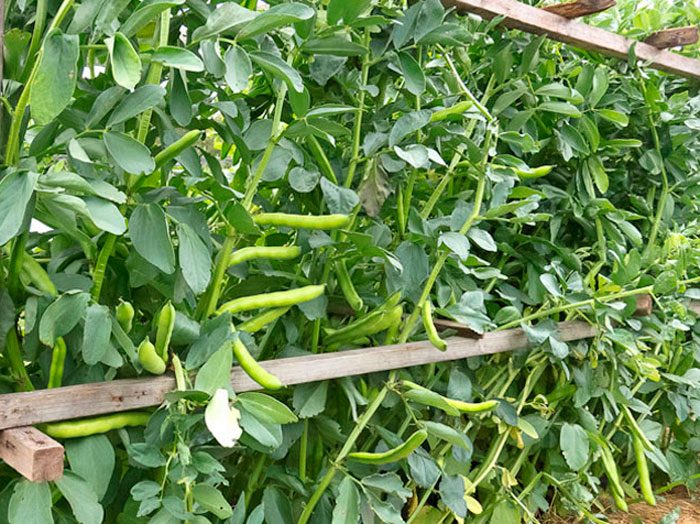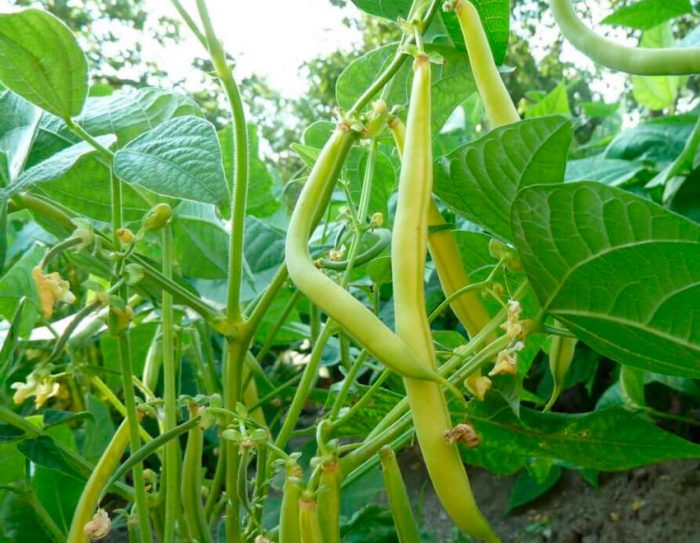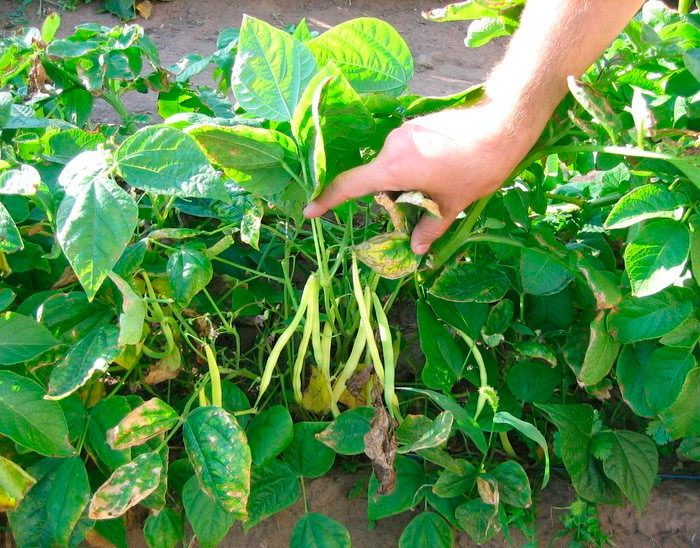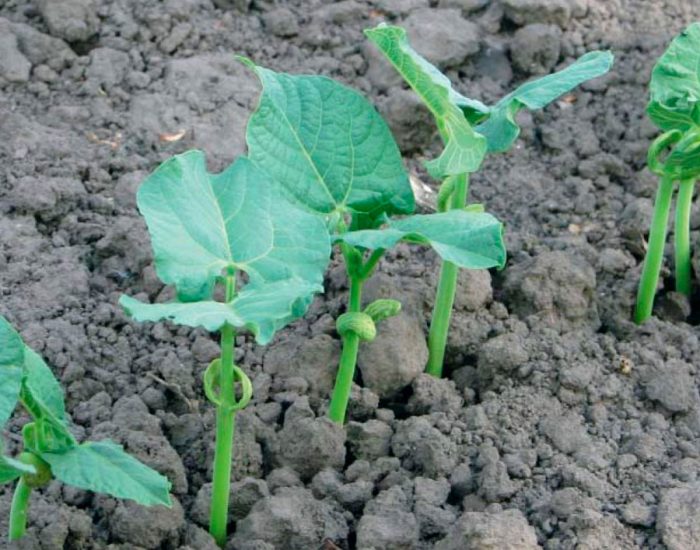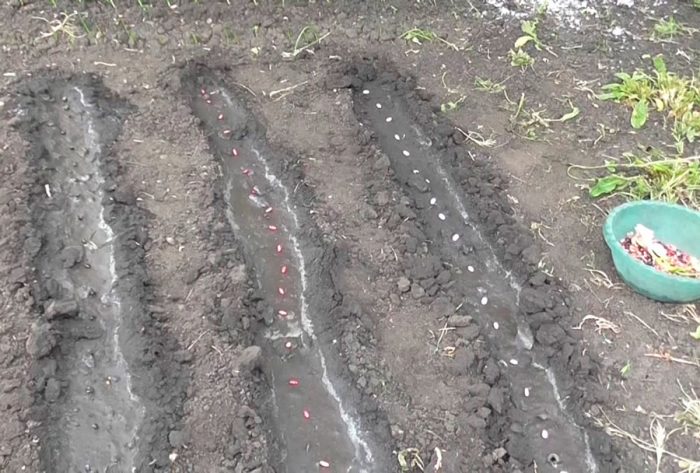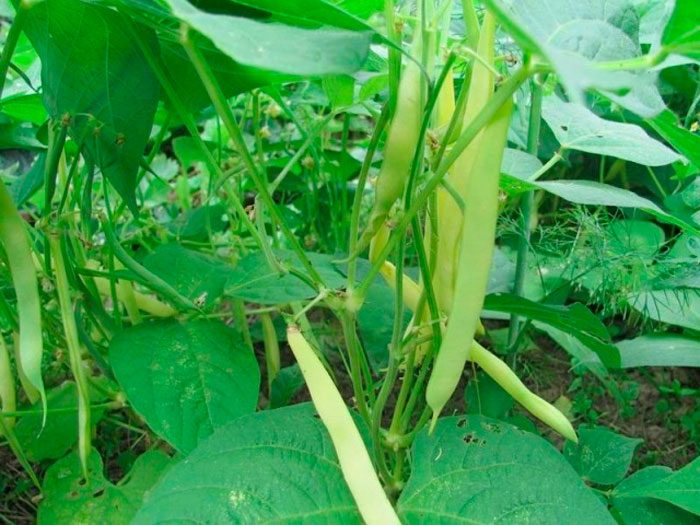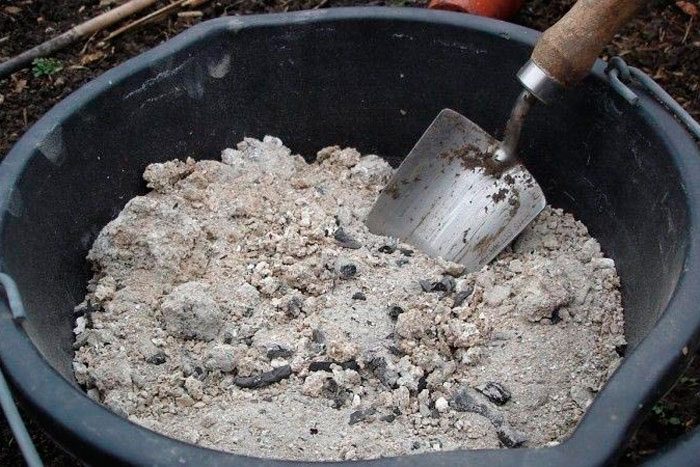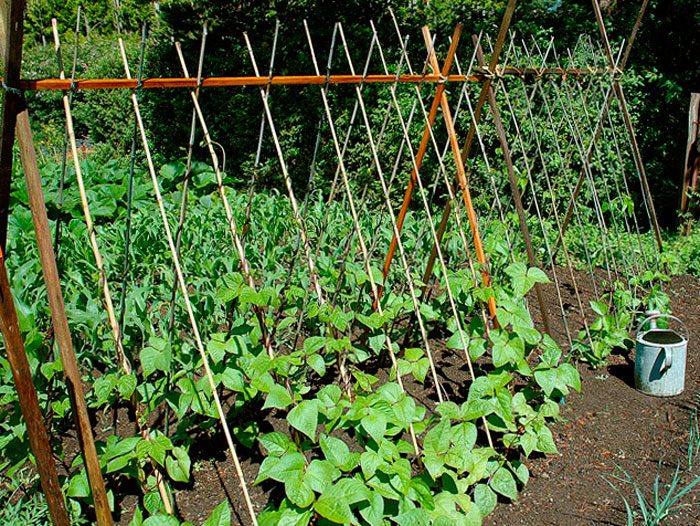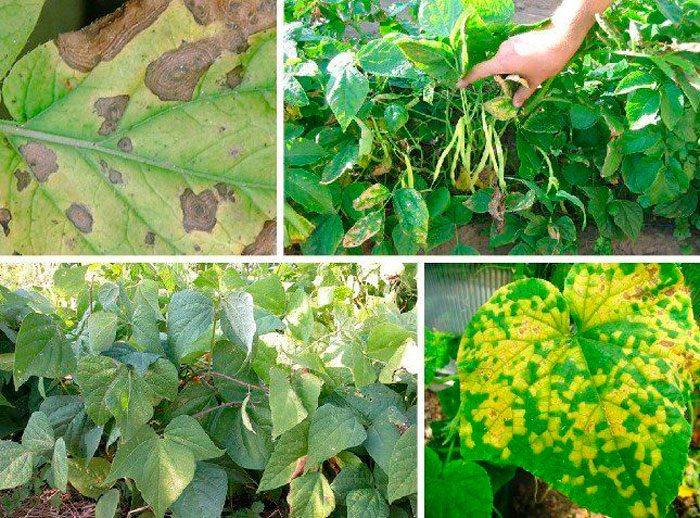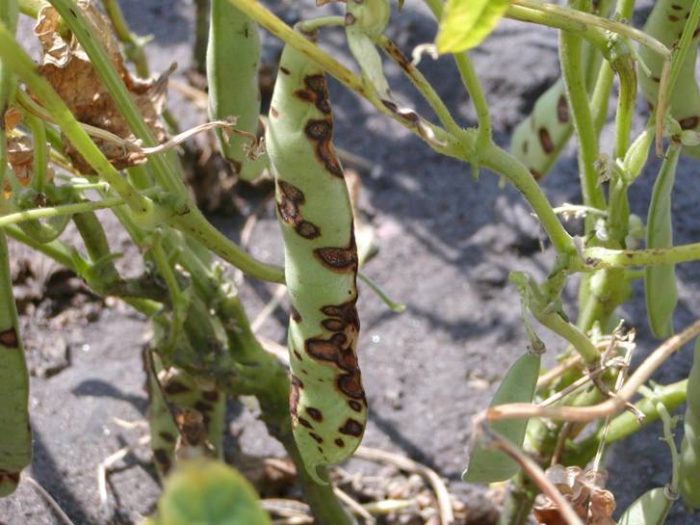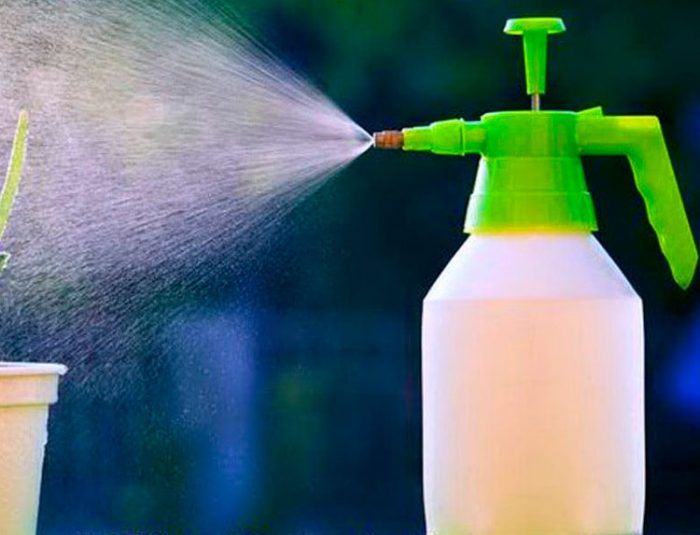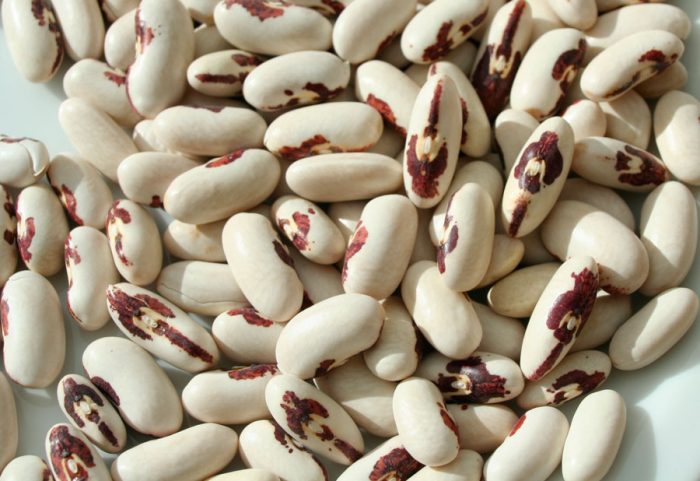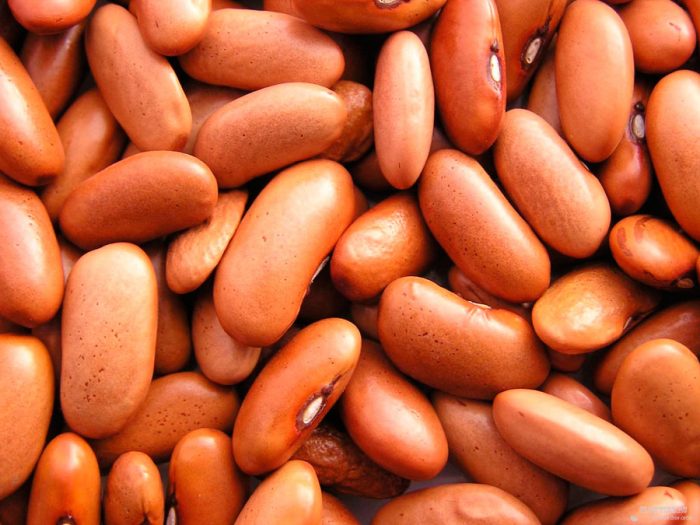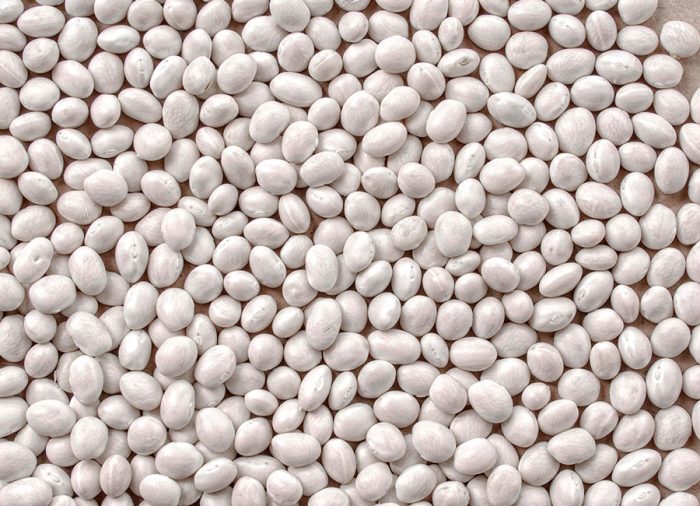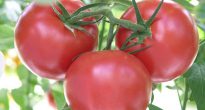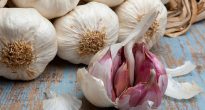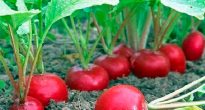Beans (Phaseolus) are a type genus of the Legume family. It unites about 90 species that are naturally found in warm regions of both hemispheres. The Greek name phaseolus in translation means "canoe, boat", most likely this is due to the fact that the beans of this plant are outwardly somewhat similar to a boat. Bernardino de Sahagun, who was a missionary and Spanish Franciscan monk who lived and worked in Mexico in the 16th century, described Aztec evidence of the variety and properties of beans in his General History of New Spain. This plant is native to Latin America. This culture came to the territory of Russia from Turkey and France in the 16th century, at first it was grown only as an ornamental plant. Today, among gardeners, fiery red or multi-flowered beans (Phaseolus coccineus) are quite popular, the bushes are decorated with flowers of a fiery color, this plant is also called "Turkish beans". Beans began to grow as a garden crop in the 18th century. Today, common beans (Phaseolus vulgaris) are very common among gardeners; this species has many varieties and varieties, it is grown as seeds and fruits. Beans are one of the top 10 most useful vegetable crops. It is unpretentious, so it is very easy to grow it in open soil. However, in order to get a rich harvest, you need to know some features.
Content
Brief description of cultivation
- Landing... Sowing in open soil is carried out in May after the soil warms up at a depth of 10 centimeters to 12-15 degrees.
- Illumination... The site must be well lit.
- Priming... The soil should be nutritious, light and permeable, with a pH of 6–7.
- Watering... Before the formation of buds begins, you need to water the bushes abundantly, but rarely enough (no more than 1 time in 7 days). During the formation of a 4 or 5 leaf plate, watering should be completely stopped, and it should be resumed only after the bushes have bloomed, while the amount of water should be gradually increased.
- Hilling and loosening... After the height of the seedlings is 7 centimeters, the bed needs to be loosened shallowly for the first time, the second time - half a month after the first, while the bushes need to be healed.And before closing the rows, the surface of the bed is loosened for the third time, while the bushes are again spud.
- Garter... Such a culture needs supports, the height of which should be about one and a half meters. Pull the wire over them. To fix the stalks of the beans to the guides, you need to use a rope or twine. Also, a stake can be installed near each bush, the climbing stems of this plant will climb along it.
- Fertilizer... During the formation of the first true leaf plate, the plant must be fed with superphosphate, during the period of bud formation - with potassium salt. During the formation of the beans, the bushes need to be fertilized with wood ash. Such a crop does not need nitrogen-containing fertilizers, because it produces this element on its own.
- Reproduction... Seeds.
- Harmful insects... Bean weevil, garden caterpillars and cabbage scoop.
- Diseases... Anthracnose, bacteriosis, viral mosaic.
Features of beans
Vegetable bean is an erect or climbing herbaceous perennial or annual plant. In pinnate leaf plates, each of the lobes has stipules. Flowers are part of racemose inflorescences, they are formed in the axils. The fruits are bivalve beans, they contain large seeds, they are separated from each other by spongy incomplete septa. Each of the beans weighs approximately 1 gram. Experts call this plant "the meat of healthy people", as it is nutritious and contains a large amount of protein, and beans are also very useful. This plant is a short-day crop, it will need no more than 12 hours of light per day in order for the fruits to ripen on time and the yield to be high. The advantage of beans is their self-pollination. On the same site, you can grow various varieties of beans, while they will not be pollinated.
Planting beans in open ground
When to plant beans in the ground
Sowing beans in open ground begins in May, while the ground at a depth of 10 centimeters must necessarily warm up to 12-15 degrees. Also, returnable spring frosts should be left behind. As a rule, this crop begins to be sown during the flowering of the chestnut. Sowing of erect varieties should be carried out 7 days earlier than sowing of climbing bean varieties. Bush beans can be grown as a second crop after the vegetable harvest, which ripens by the first days of July. Sowing beans should be carried out in several stages: once every 1.5 weeks from the second half of May to the first days of July. Often peas and beans are grown near apple trees, since this tree is able to protect legumes from gusts of cold winds.
Before proceeding with sowing, you must first prepare the seeds and soil. To do this, before planting, the seeds need to be sorted out, then they are poured overnight with water to swell. And in the morning, just before sowing, the seed should be immersed in a boric acid solution for five minutes (1 gram of substance for half a bucket of water), this treatment will protect the seeds from most diseases and pests.
Suitable soil
This crop is not recommended to grow on clay soil, as it passes water very slowly, and stagnation of liquid in the soil harms this crop. Such a plant also reacts negatively to soil, which contains a large amount of nitrogen, since it is able to extract this substance on its own from the air.
Well-lit areas with reliable protection from wind gusts are best suited for growing this crop. The soil should be nutritious, light and permeable, while the groundwater should be very deep, and the pH of the soil should be 6–7.It is also recommended to grow this crop in areas with poor soil, which has not been fertilized for a long time, since it, like all legumes, is a green manure and a good predecessor for various vegetable crops.
The preparation of the site should be done in the autumn. To do this, it is necessary to dig up the soil to the depth of the bayonet of the shovel, while adding 2 tbsp. l. dolomite flour, 1 tbsp. l. double superphosphate, 4 kilograms of compost or humus, 1 tbsp. l. ammonium nitrate, ½ tbsp. l. potassium soda or potassium chloride per 1 square meter of soil. Or you can add 30 grams of superphosphate, ½ a bucket of compost or humus, and 20 grams of wood ash per 1 square meter of land. Good predecessors of this crop are: cabbage, tomatoes, potatoes, eggplant, pepper and cucumber. It is not recommended to grow beans in areas where members of the Legumes family were previously grown, for example: peas, lentils, soybeans, peanuts, beans and beans. Such plots can be used for cultivating beans only after 3 or 4 years. Beets, tomatoes, cabbage, carrots, onions and cucumbers can be grown in the neighborhood of beans.
Landing rules
Bush varieties are sown to a depth of 50 to 60 mm, while the distance between the bushes should be from 20 to 25 centimeters, and the distance between the rows should be about 0.4 meters. When sowing climbing varieties, the distance between plants should be from 25 to 30 centimeters, and the distance between the rows is about 0.5 m. 5 or 6 seeds are planted in one hole. After the seedlings appear, only 3 of the strongest should be left in one hole, while the extra ones should be transplanted. The crops must be watered, and then the soil is tamped with the back of the rake. If there is a danger of recurrent spring frosts, then the surface of the bed should be covered with a film.
Bean care
In order for the emerging bean seedlings to be more stable, they must be hilled. Then the bushes will need to be systematically watered, weeded, huddled, fed, loosened the soil surface, and tied the stems to the supports. To make the bushes more branched and the beans ripen faster, the tips of the shoots must be pinched.
How to water
Before the formation of buds begins, watering should be carried out only when it is needed (no more than 1 time in 7 days). Watering should be abundant, but the exact amount of water directly depends on the soil and weather. The soil should be moderately moist.
After the seedlings have 4 or 5 true leaf plates, the bushes need to stop watering. When they bloom, watering should be resumed. Then a gradual increase in the number of irrigations and the water used is carried out, as a result, they need to be doubled. Rainwater is best suited for irrigation, but tap water can also be used for this, but it must first be poured into a large container, where it should stay for at least 24 hours, this will allow it to settle well. When the bed is watered, it is much easier to remove weeds and loosen the soil surface between the rows.
The first time the soil surface in the garden bed is deeply loosened after the height of the seedlings is 70 mm. After half a month, the soil is again not very deeply loosened, while it is necessary to huddle the bushes. Before the rows of beans close, the soil needs to be loosened a third time, while the bushes are spud again.
Top dressing beans
When the first true leaf plate is formed, the bushes will need superphosphate feeding (from 30 to 40 grams per 1 square meter of the plot). And during the formation of buds, potassium salt should be added to the soil (per 1 square meter of the plot from 10 to 15 grams). During the ripening of the beans, wood ash should be added to the soil. It is better not to use nitrogen-containing fertilizers for feeding this crop.The fact is that beans are able to independently extract nitrogen from the air, and if there is a lot of this element in the soil, then this will provoke a strong growth of greenery, which will have an extremely negative effect on the harvest.
Garter
When planting climbing bean varieties, a support should be installed near the bushes, the height of which should be about 150 centimeters. On the installed supports, you need to pull a rope or wire, while placing it horizontally. Along these ropes, it will be necessary to direct the curly stems of the bushes.
You can grow this culture with nests, for this, after the seedlings appear, they should not be thinned out, they will grow in a lush bush. Near the bush, you need to install a stake from a tree, it is on it that creeping shoots will curl. Then, around the bush, you need to install 3 or 4 guides of two meters in height, then their tops are tied, while the design should look similar to an Indian wigwam. The support should not be made of metal or plastic, since the shoots are not able to climb over them.
Diseases and pests of beans
Harmful insects
Most often, bean bushes are injured by a garden and cabbage scoop, and also by a bean weevil. Scoops arrange their egg-laying on the aerial parts of the bush, and after a while larvae appear, which eat flowers, greens and fruits.
The bean weevil is a bug that enters the ground along with the seeds. Such a bug destroys the fruit from the inside.
Diseases
If you take care of such a culture incorrectly or do not follow agrotechnical rules, then it can be affected by bacteriosis, anthracnose or viral mosaic.
The danger of bacteriosis is that it is able to destroy the bean bushes, while its pathogens remain viable for many years, and they develop in the soil and in plant debris.
If the bush is affected by anthracnose, then depressed spots of brown appear on its surface, their shape can be round or irregular, while the veins on the leaf plates acquire a brown color, the foliage turns yellow and holes appear on it, after which it dies. On the surface of the fruit, specks of pale red, red or brown appear, over time they become sores.
When damaged by a mosaic, necrotic specks form on the surface of the leaf plates, while the veins become discolored.
Bean processing
If the beans are sick with a viral mosaic, then it is no longer possible to cure it, since this disease is considered incurable. For prevention purposes, it is necessary to properly care for the beans, while adhering to the rules of crop rotation and not neglecting the pre-sowing preparation of seeds.
The defeat of beans with bacteriosis or anthracnose can also be avoided by providing the culture with proper care. If, nevertheless, the bushes get sick, the affected parts or the entire plant are removed from the site and destroyed. Then the bushes and the garden should be sprayed with a solution of Bordeaux mixture (1%). However, it should be borne in mind that it is better to timely carry out preventive treatments of bushes and beds from fungal diseases than to spray the beans with chemical agents later. It is necessary to spray the plants and the soil surface around them with a solution of Fitosporin, this should be done in the spring after the height of the seedlings is 12 to 15 centimeters, this procedure is repeated after harvesting. If you adhere to preventive measures, as well as observe the rules of crop rotation and agricultural technology, then thanks to this, the bushes will have a very high resistance to all diseases.
So that scoops do not appear on the site, in the autumn time the soil must be dug deeply. However, if in the spring they appear in the garden, then the bushes should be sprayed with a solution of Gomelin (0.5%) or Bitoxibacillin (1%), these drugs are bacterial.So that bean weevils do not appear on the garden bed, before sowing the seed must be sorted out, then it must be soaked to swell, and then the seeds are treated with boric acid.
Harvesting and storing beans
If you need young beans for food, then you can start harvesting the fruits half a month after the flowers appear, after the size of the fruits becomes maximum, while they will be very tasty. To cut the pods, you need to use scissors, this procedure is carried out once every two days in the morning, while they should be saturated with night coolness and moisture. Young beans are used to prepare vegetable stews, salads and soups, and they are also served stewed as a side dish for fish and meat dishes. It should be noted that fresh young beans cannot be stored for a long time. In order to extend the shelf life of such beans, they need to be preserved or frozen.
In the case when this crop is grown for grain, the harvest is carried out only once after the fruits are fully ripe and the pods are dry. The shoots must be cut off at the surface of the soil, after which they are tied in bunches, and then they are hung upside down in a well-ventilated and dry room, for example, in a dry shed or in the attic. Half a month after the seeds are fully ripe and dry, they are husked from the pods, then the beans are stored in glass containers, which are covered with a twist metal lid. Then the containers are removed to a cool place.
The roots of the bushes must be left in the ground, decomposing, they will saturate the earth with nitrogen. Several pods are used to collect seeds, which grow in the lower part of the bush. They need to be thoroughly dried, then the beans are extracted from them, they are stored for storage in the refrigerator on a shelf for vegetables, where the air temperature should be 5-6 degrees. The seed remains viable for 10 years.
Types and varieties of beans
All varieties of beans intended for cultivation in open soil are classified according to various characteristics. For example, they are divided according to the ripening period:
- early - ripen after 65 days;
- medium early - ripen in 65–75 days;
- average ripening period - ripen in 75–85 days;
- mid-ripening - ripen in 85-100 days;
- late ripening - they ripen for 100 days or longer.
The varieties are divided according to the shape of the aerial part into curly and bush. They are also divided into 3 groups according to purpose and taste for grain (shelling), asparagus (sugar) and semi-sugar.
Shelling, or grain beans
Cereal varieties are grown to obtain grains, as the pod has a layer of parchment inside, so they cannot be eaten with the shell. In middle latitudes, such varieties are not cultivated, since they do not have time to ripen, and unripe fruits cannot be eaten. In warm regions, such varieties are cultivated quite successfully. Most popular varieties:
- Gribovskaya 92... This mid-season bush variety is moderately branchy, it ripens in 90 days. The green, xiphoid pods are about 12 centimeters long.
- Chocolate girl... A shrub variety of medium ripening, bushes reach a height of about 0.6 m. Straight brown pods are of medium length, they are resistant to shedding.
- Hostess dream... A medium-ripening bush variety has long yellow and fairly wide pods, inside them are white seeds, which contain a large amount of protein.
- Ballad... A mid-season variety, it is drought-resistant, the bushes are not very tall. The green pods contain beige seeds, on the surface of which there are purple specks, they contain a lot of protein.
- Golden... The height of the bushes is about 0.4 m, in the golden curved pods there are delicious yellow seeds, they contain a large amount of protein.
- Ruby... A medium-ripening bush variety has narrow pods, inside which are delicious cherry seeds.
The following varieties are also popular among gardeners: Oran, Varvara, Lilac, Nerussa, Generous, Yin-yang, Pervomayskaya, Geliada, Svetlaya, Belozernaya, Ufimskaya and Palevo-variegated.
Sugar or asparagus or vegetable beans
In asparagus (sugar or vegetable) varieties, there is no parchment layer inside the pod. In this regard, if desired, the seeds can be eaten with the pod. These varieties, in comparison with other varieties, are the most delicious, and they are very often included in diet menus, as they help to remove excess moisture from the body. The pods can be brown, green, white or various shades of yellow. The most popular varieties are:
- Purple queen... A bushy mid-season variety is distinguished by high yield, unpretentiousness and resistance to viruses. Dark purple pods are about 15 centimeters long.
- Crane... Such a compact variety has unpretentiousness and high productivity. The height of the bushes is about half a meter, the fiberless pods are very delicate, they are colored green.
- Melody... This early-ripening curly variety needs a garter, the length of green fruits is about 13 centimeters, they are almost flat. 8 or 9 pods grow on one shoot.
- Oil king... The early ripening bush variety is distinguished by its yield. The yellow pods have a delicious taste.
- Hell Rem... The fruits of such a climbing variety have a pleasant mushroom taste. The beans are pale pink in color. The soup made with these beans has a mushroom flavor and aroma.
The following varieties are also popular: Winner, Panther, Deer King, Caramel, Fatima and Saksa 615.
Semi-sugar beans
In semi-sugar fruits, the parchment layer is not very dense or it forms quite late. The pods can be eaten only at an early stage of development, later they form tough fibers that are not very pleasant to the taste. Popular varieties:
- Second... Bushy early ripening variety has green pods, which reach about 10 centimeters in length, inside there are 5 or 6 seeds of brownish-yellow color. Fruits do not have dense partitions during technical ripeness, but they are formed in the phase of biological maturity.
- Welt... The bush variety has a high yield and resistance to anthracnose and ascochitosis. The length of the green pods is about 13 centimeters, they contain 5–6 lilac-pink beans.
- Indiana... This early maturing bush variety has white seeds with a red pattern. In the southern regions, this variety gives a crop 2 times per season.
Such varieties as Antoshka, Fantasy and Nastena are also popular.

